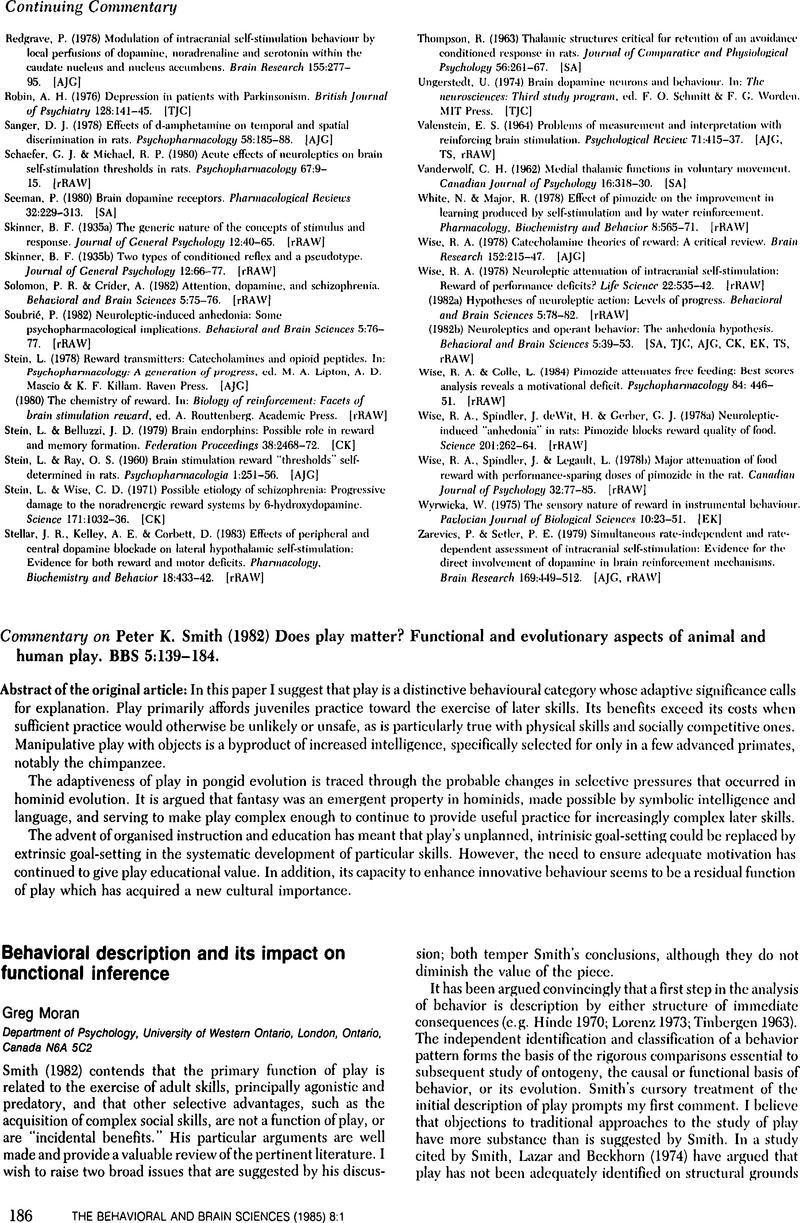Crossref Citations
This article has been cited by the following publications. This list is generated based on data provided by Crossref.
Pellis, Sergio M.
and
Pellis, Vivien C.
1987.
Play-fighting differs from serious fighting in both target of attack and tactics of fighting in the laboratory ratRattus norvegicus.
Aggressive Behavior,
Vol. 13,
Issue. 4,
p.
227.
Hole, Graham
1988.
Temporal Features of Social Play in the Laboratory Rat.
Ethology,
Vol. 78,
Issue. 1,
p.
1.
Gunst, Noëlle
Casarrubea, Maurizio
Vasey, Paul L.
and
Leca, Jean-Baptiste
2020.
Is female-male mounting functional? An analysis of the temporal patterns of sexual behaviors in Japanese macaques.
Physiology & Behavior,
Vol. 223,
Issue. ,
p.
112983.
Cenni, Camilla
Casarrubea, Maurizio
Gunst, Noëlle
Vasey, Paul L.
Pellis, Sergio M.
Wandia, I Nengah
and
Leca, Jean-Baptiste
2020.
Inferring functional patterns of tool use behavior from the temporal structure of object play sequences in a non-human primate species.
Physiology & Behavior,
Vol. 222,
Issue. ,
p.
112938.
Casarrubea, Maurizio
Leca, Jean-Baptiste
Gunst, Noëlle
Jonsson, Gudberg K.
Portell, Mariona
Di Giovanni, Giuseppe
Aiello, Stefania
and
Crescimanno, Giuseppe
2022.
Structural analyses in the study of behavior: From rodents to non-human primates.
Frontiers in Psychology,
Vol. 13,
Issue. ,
Leca, Jean-Baptiste
2023.
Towards a three-level neo-Tinbergenian approach to object play: Structure, causes and consequences of a behavioral puzzle.
Neuroscience & Biobehavioral Reviews,
Vol. 152,
Issue. ,
p.
105290.


